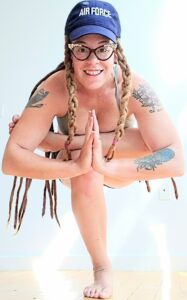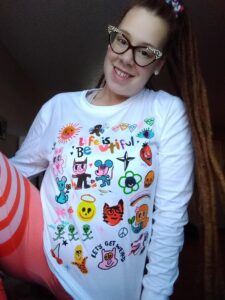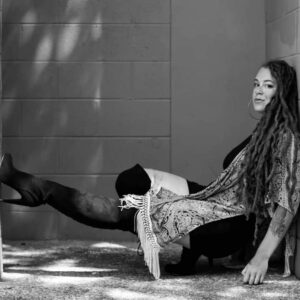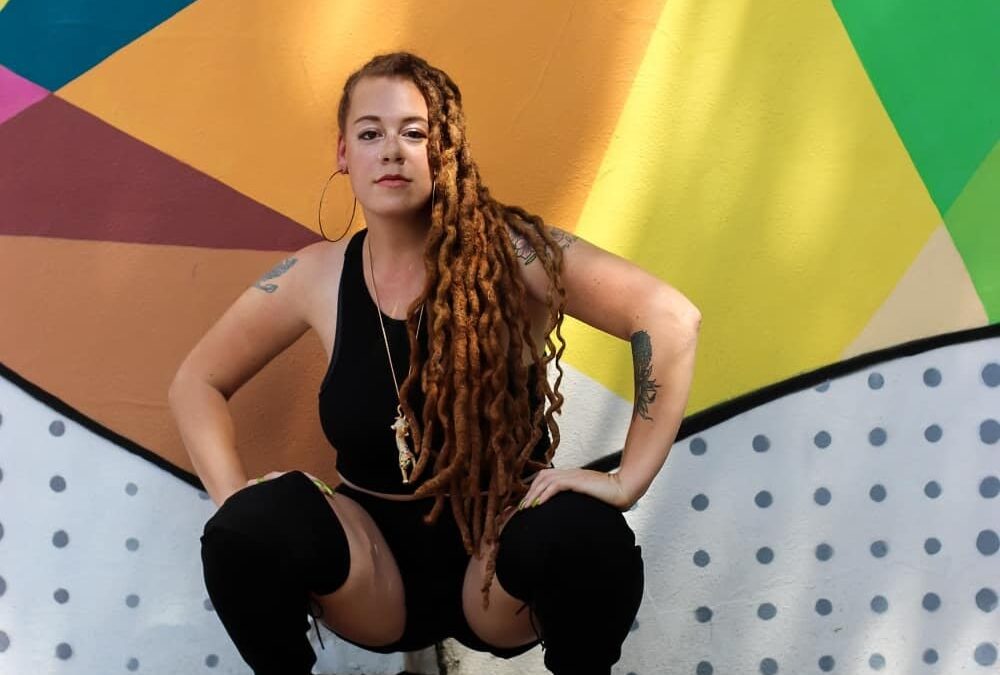Katya taught yoga in Austin for years before moving to DC in Fall 2021. Her classes are incredibly engaging, adaptable, and unique, just as her incredibly relevant wisdom runs deep. Read on to learn why Katya feels “How we move in yoga is not a reflection of our character, it simply is.”
Through her years of practice, Katya found that yoga helped her connect more deeply with herself and her community. In her classes she encourages students to do the same. She also cultivates community through monthly Goddess Collective workshops in which she invites participants to explore their body through freeing, sensual movement as they find deeper connection to their wild roots.
A Spiritual Introduction to Yoga
I was raised in a Hindu-based spiritual path so I dabbled in yoga throughout my life. As a child or young adult I was never involved in any sports or athletic pursuits. Yet a few years ago, I started taking dance classes, pilates, and yoga. I found all three to be fun, motivating, accessible. They are a great compliment to my creative life as a musician. I started practicing yoga regularly in Austin then decided to attend an intensive teacher training where I trained with incredible mentors and fellow yogis.
Yoga became a community for me and provided an amazing set of tools to nourish the mind, body, and spirit. At the time, I was looking to change jobs and started teaching online after completing my training. A few months later, I was teaching at my home studio. The community aspect is what kept me connected to yoga.
I’m also a lover of learning, and there is an unending library of things to learn about yoga, from philosophy to science and everything in between. Yoga is so much more than shapes and poses. I feel grateful to have a profession and passion where I am constantly encouraged to learn, grow and be open to creativity. I’ve been with Yoga District since I moved to DC in September. I’m so happy to be part of a welcoming, inclusive, and kind community of teachers and students.
Empowering Students
I always encourage students to take up space, practice autonomy, and move at their own pace. So much of life is out of our control. Yet when yoga is taught in a way that gives the student control, that personal sovereignty is taken back. Language alone is a powerful tool – I like to focus on verbal cues rather than demo-ing when I teach because it allows students to have their own experience and not be concerned with the “right” shape. I offer lots of options in different poses because I want people to be able to choose how to move. Sometimes a student might want the opportunity to take:
- A restful or active pose
- An alternative pose to accommodate injury
- Varying energy level
- Static versus dynamic movement.
For example, I will teach dancers pose (Natarajasana) with an option to move from standing to leaning forward, rather than standing still in the shape (1). I consciously eliminate vocabulary that creates a hierarchy in poses, like “right/wrong/deeper/fuller/stronger/advanced,” and instead offer a variety of options.
I also love to have fun with my class playlists. Music is a language in itself, and it contributes to the environment and atmosphere of the class. When students are familiar with songs, it is comforting and helps the mind stay present and connect to the sequence. I might choose an upbeat playlist for a more flowy, dynamic sequence, or a bass-tone-centric set for a slower or more intense sequence. Sometimes I like to choose music with lyrics for savasana – many people struggle to rest or lay still, and it can be something for the mind to focus on, much like a mantra or the breath.
Finding Connection, Community, and Creativity
Yoga taught me to be present with and connected to my body. As a trauma survivor, I saw an incredible transformation in this relationship. I was able to shift from a state of dissociation to being present in my body. Breath is the foundation of yoga; it’s where we begin. So when you’re focused on each breath as it happens, your awareness is in the present. Once that shift happens, you can begin to notice what happens in the body when you move. I love that yoga can be used as a tool to check in with yourself each day. I love to practice before or after I teach a class to help either center my energy or get out of the mind and into the body.
Yoga has positively impacted all of my relationships. I have a lot more love, patience, and forgiveness for myself, and that extends to my husband, friends, and family. There’s a meditative practice called metta, or “loving-kindness,” where you send love and good wishes to yourself and all beings (2). I have met and learned from so many unique and inspiring people through my studio communities. The practice of yoga embodies a connection to myself and my community.
a connection to myself and my community.
We are all waves in the same ocean – we’re all on this planet together, having different but shared experiences. It’s an amazing experience to watch a room full of people move and breathe together – they are in sync, yet each person’s unique movement defines them. As I watch people move, I learn about others. There is no more present and creative feeling than watching each person move and cueing a sequence in real-time based on observation. As a trained jazz musician, I am comfortable improvising, and I feel that yoga complements and contributes to my musicianship. Music and yoga are both creative endeavors that are an exchange of energy that connect people and inspire empathy.
Letting Go of Perfection
Yoga has also taught me to take things less seriously and let my joyful, authentic self show up! It’s hard not to laugh when you’re bending into crazy shapes and topple over, and that ability to let go makes room for happiness. Studying music in an academic setting took some of the “naturalness” out of my physical stage presence. Yoga helped me connect with my physical body and creative mind, and I am far more relaxed now when I perform. In my classes, I like to create a relaxed environment. We feel we have to “get right” or excel at so many aspects of life. I want my classes to be a neutral space. A space for people to explore, play, and express that which you can’t with words. There’s no perfection in yoga, and that’s the beauty of the practice.
In my Yoga Teacher Training (YTT), during an intense Ashtanga practice, I struggled with comparison to others when I couldn’t do certain transitions. Then in meditation, I had a realization about my negative self-talk. I could see and feel how it was actively harmful. At that moment I realized I didn’t need to compare myself to others anymore. I’ve struggled with perfectionism all my life and realizing that perfectionism is a useless pursuit was liberating. I try to impart this teaching to all students and encourage them to embrace their uniqueness. When one is new to yoga, sometimes they might look around at others or the teacher, trying to figure out what they’re supposed to be doing. It’s a freeing feeling when one realizes there’s really no “supposed to.” I like to inform students that what others look like isn’t important and that everyone makes shapes differently. How we move in yoga is not a reflection of our character, it simply is.
Yoga has also improved my musicianship. It encourages me to listen more deeply, have an open mind, and let go of self-judgment around my creative practices. I was trained for years to look at music with an analytical mind, but music is physical and spiritual to me. So yoga helped connect me with the courage to take musical risks, experiment, and be less reserved when sharing my voice.
Sources
- Dancer’s Pose (Natarajasana), https://www.yogapedia.com/yoga-poses/dancers-pose/11/11008
- Metta (Loving-Kindness)Meditation, https://ggia.berkeley.edu/practice/loving_kindness_meditation


